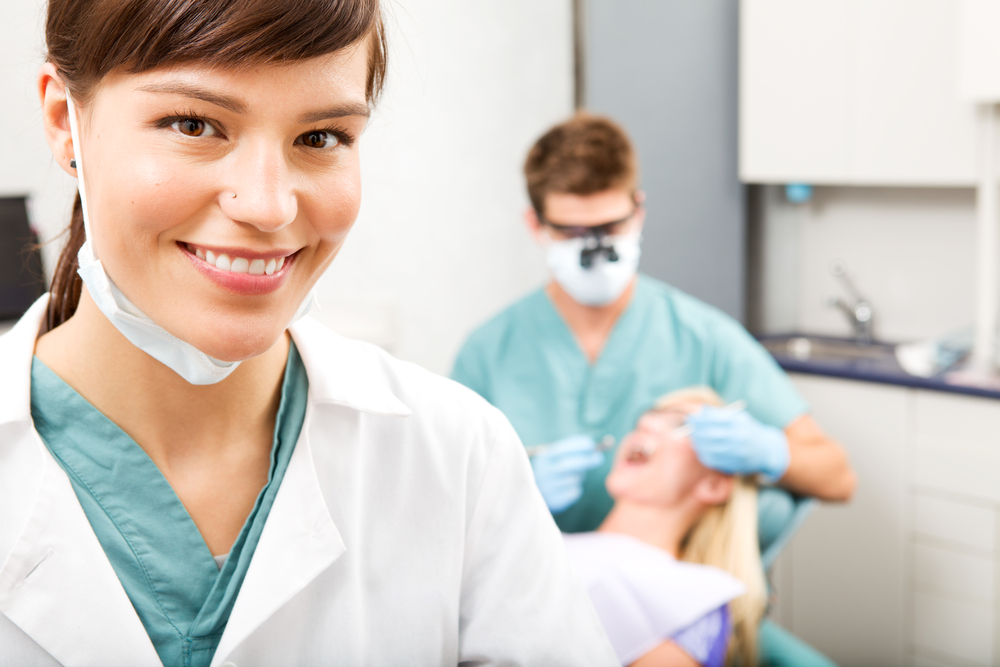Why is Toothpaste Minty?
Ever wondered why almost every tube of toothpaste you pick up is mint-flavored? While some brands offer other options, mint dominates the toothpaste world. But how did that even start?...

There is a common misconception that a dental hygienists’ only duty is to clean teeth. Hygienists cover areas of both patient care and after-care treatment in addition to keeping your teeth and gums plaque and tartar free. Hygienists work closely with dentists to treat patients in more areas than just brushing and flossing. Here are six responsibilities of a dental hygienist that you may not realize.
Perhaps the most critical role dental hygienists play in a patient’s oral health is by providing preventative oral care in the way of performing professional dental cleanings. The goal of teeth cleaning is to remove stains, soft deposits called plaque, and hard deposits, also known as calculus or tartar. Removing hard deposits is a critical part of professional cleaning because brushing at home is not enough to remove them.
There are a variety of tools that a hygienist utilizes for teeth cleaning. A hand scaler, a metal device with a hook at the end, removes plaque and tartar. Alternatively, some hygienists clean with an ultrasonic scaler, which cleans with vibrations. After the cleaning, the hygienist may polish the teeth and apply fluoride or a sealant to prevent future damage to the teeth. The hygienist polishes with a tool that rotates like an automatic toothbrush. Polishing is an essential part of the professional cleaning process because it is more difficult for plaque and calculus to accumulate on polished teeth.
Completing patient assessments is one way that dental hygienists support a dentist. A typical patient assessment may begin by documenting the patient’s medical history. Next, the hygienist examines the patient’s teeth, head, and neck. In the evaluation, the hygienist will be looking for any present dental issues such as periodontal disease, bleeding gums, oral cancer, recessed gum tissue, gingivitis, and oral lesions. The hygienist reports the results of the patient assessment to the dentist, and will also be responsible for making a record of the patient’s condition and treatment plan.
Dental hygienists teach patients about proper home care. They may instruct patients on proper brushing and flossing techniques, and instruct patients on how to correct any inconsistencies in their current brushing technique. They also work to educate patients about the importance of proper nutrition to maintain oral health.
If a patient has avoided seeing the dentist for several years, he or she may feel uncomfortable, nervous, or stressed during their appointment. The hygienist will help to keep a patient calm and assure them that they care only about treating any existing problems. Patient counseling can also include help after treatment. For example, if a patient has root planing and scaling performed to help with gingivitis, the hygienist will provide the patient with care instructions for what he or she should do at home following any treatments that require additional care.
Dental hygienists are often the person who takes x-rays. Many offices now use modern x-ray technology that can take a full series of images in just a few minutes. Dental hygienists are responsible for protecting themselves and patients from x-ray radiation. Hygienists also take impressions of individual teeth or a group of teeth to make dental implants, dentures, and other oral appliances.
The job duties of a dental hygienist are vast, and one of their most important roles is to assist the dentist during any treatments that may be necessary. It is our goal at Aubrey Baudean DDS to work together as a team to meet the oral health needs of each patient we see. Providing valuable health care services while establishing trusting relationships with patients is our goal. If you’re ready to see for yourself how incredible our team of highly-skilled dental hygienists are, call Aubrey Baudean DDS today to schedule your next cleaning and exam.